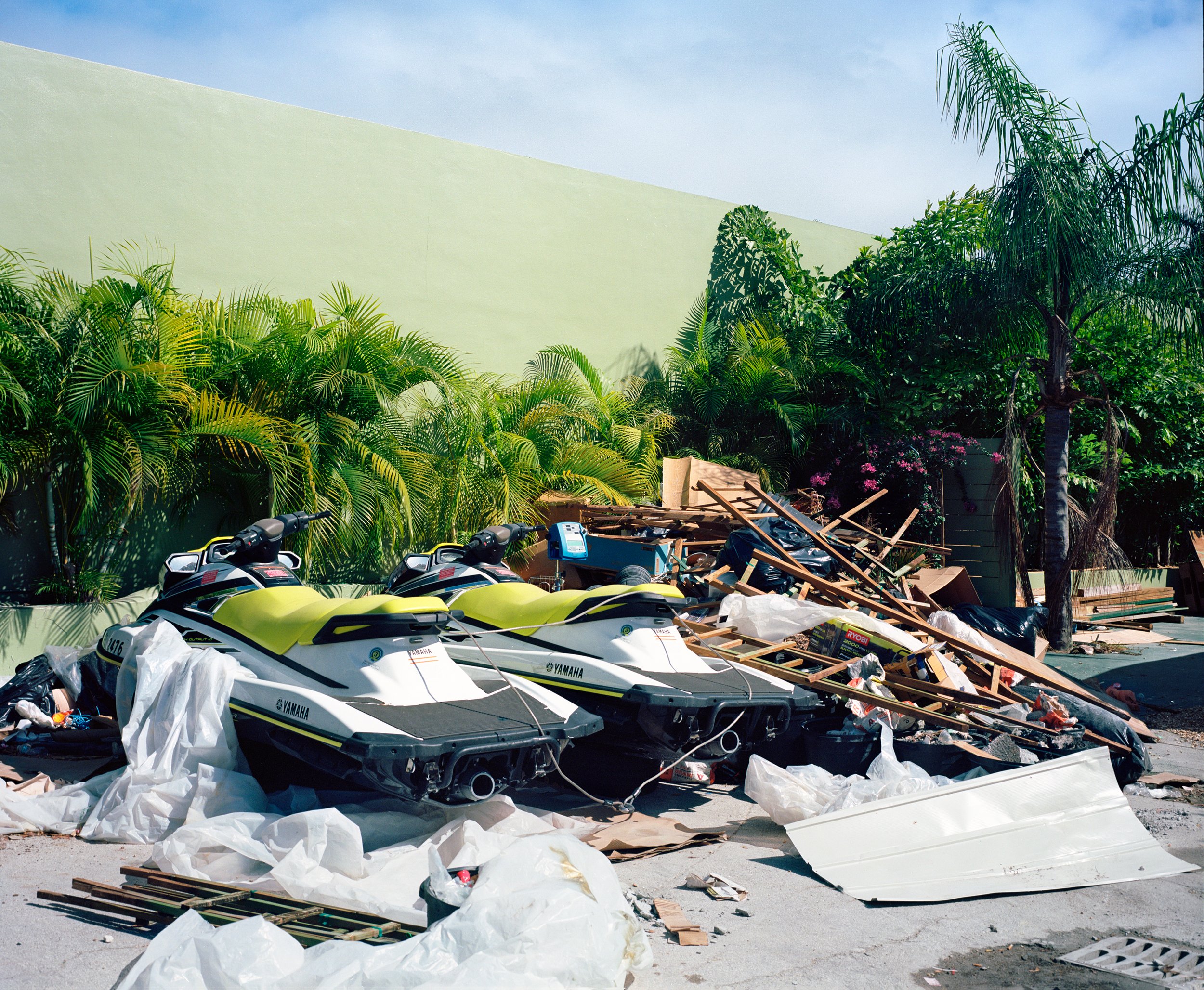
Rose Marie Cromwell: A More Fluid Atmosphere Opening Reception
Rose Marie Cromwell is a Miami-based artist whose work is rooted in the language of documentary photography but subverts many of its tropes by creating tension between the real and the fabricated, the autobiographical and the political to convey lyrical stories about contemporary life, particularly in the Caribbean and Latin America. While her photographs critically address issues of politics, economic injustice, and climate change, Cromwell takes a sidelong approach, revealing how these powerful forces subtly manifest in the built environment or the human body. Though they depict everyday objects and commonplace scenes, her photographs often verge on abstraction to express dreamlike states and a sense of disorientation in the face of globalization.
“A More Fluid Atmosphere” is Cromwell’s ongoing body of work about Miami, a city literally and metaphorically at the edge of the United States that exemplifies the country’s most acute cultural syncretism, severe economic inequalities, ostentatious excesses, and precarious environmental state. Her photographs present a vision of Miami distinct from its prevailing depiction in popular media as a sleek and glamorous playground. Cromwell concentrates on the city’s lesser-known industrial, residential, and commercial spaces to capture its multicultural realities and economic disparities. These contrasts articulate a place where deep spirituality and global commerce are present on nearly every corner.
Cromwell’s approach to the medium of photography is expansive and open-ended. She is keenly interested in the potential intersections of photography and sculpture. For this exhibition, in addition to prints framed in a conventional manner, Cromwell introduced unconventional presentation methods, such as mounting photographs to raw plywood and printing on commercial vinyl fabric, in order to bring the images and the materials they depict closer together. Cromwell is particularly adept at channeling the materiality of her subjects—a heap of scrap brass, a bag of ripe fruit, or a scraped knee—to tell tangible though not easily visible stories about the city. Taking full advantage of the intense south Florida light, she playfully deploys vibrant color and rich texture to throw easily overlooked indicators or wider cultural and economic shifts into stark relief.
– Gregory Harris, High Museum of Art’s Keough Family Curator of Photography



No Comments